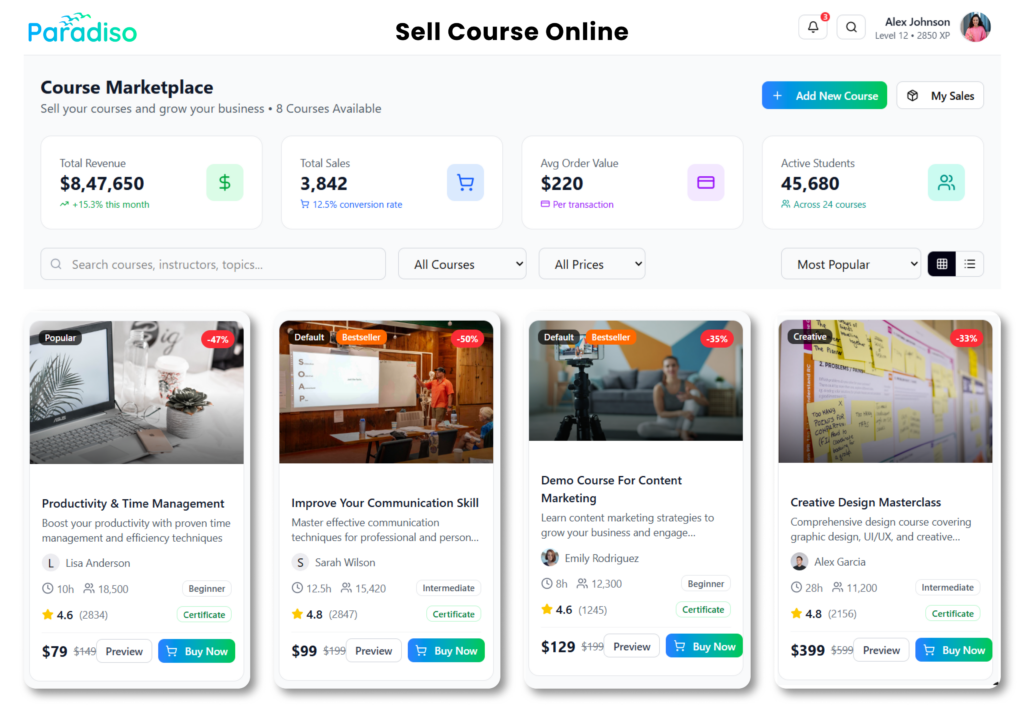Setting the price for an online course can be difficult as it depends on various factors, such as the content’s value, market competition, target audience, and cost of production. Therefore, it’s essential to research similar courses in the market and determine a fair price that will attract students while covering production and marketing costs. Additionally, offering different pricing options, such as early bird discounts or bundle deals, can also help attract potential students.
Choosing a price for an online course can be challenging for many course creators. It’s not a natural process for most people, and it’s one of the most complex decisions in creating and promoting an online course. Many course creators find it difficult to set the right price for their course, and it’s often considered one of the process’s most difficult steps.
Many online instructors find it challenging to set the price for their course, as they understand the significance of making the right choice. However, pricing should be determined appropriately and based on a well-thought-out strategy.
Factors affecting your course pricing
- The value and perceived value of your course content: If your course provides in-demand and valuable knowledge or skill, you can charge more.
- The length and depth of your course: Longer and more comprehensive courses can command higher prices.
- The level of engagement and support provided to students: If you provide more interaction, additional resources, and support, you can charge more.
- The uniqueness and demand for your course topic: You can charge more if your course is on a rare and in-demand topic.
- The pricing of similar courses in your industry: You should research the prices of similar courses to ensure that your pricing is competitive.
- Your business and financial goals: Your pricing should align with your overall business and financial goals.
- The target audience and their willingness to pay for your course: Your target audience’s financial situation and desire to pay for a course in your industry will also play a role in pricing your system.
Ways to evaluate your online course pricing
There are several ways to evaluate course pricing:
- Research the prices of similar courses in your industry: Look at the prices of similar courses in your industry, and see how your pricing compares. This will give you an idea of what the market will bear.
- Consider the value of your course content: Compare the value of your course content to the prices of similar courses. If your course offers more value, you can charge more.
- Analyze your business and financial goals: Consider your overall business and financial goals, and ensure that your pricing aligns with them.
- Test different pricing options: You can test different pricing options by offering a special promotion or by creating different pricing tiers.
- Gather feedback from your target audience: Ask them what they think is a fair price for your course.
- Monitor and track your sales: Keep an eye on your course sales and the impact of any pricing changes.
- Review and adjust your pricing as needed: Once you’ve gathered all this information, review and adjust your pricing.
Tips on how to price your online course
- Know your market and the pain they want to be solved: Understanding the needs and wants of your target market and the pain points they want to solve is essential when pricing your course. This will help you understand what they are willing to pay for and how you can position your course to meet those needs.
- Focus on the transformation you’ll provide: Emphasizing the transformation that your course will provide to your students will help you justify your course’s cost. Highlighting the benefits and value that your course will bring to your students will help to increase the perceived value of your course.
- Calculate your bottom line: You will want to determine your cost of production and the expenses associated with your course. This includes creating course materials, hosting, and other related expenses.
- Calculate your perceived value: Perceived value is how much your target audience believes your course is worth. This can be based on factors like the quality of the course materials, the level of engagement and support, and the overall value of the course to the student.
- Budget for marketing: Allocating a budget for marketing and promotion of your course is important to reach your target audience and generate sales.
- Offer payment options: Offering different payment options, such as installment payments or scholarships, can help to make your course more accessible to a wider range of students.













